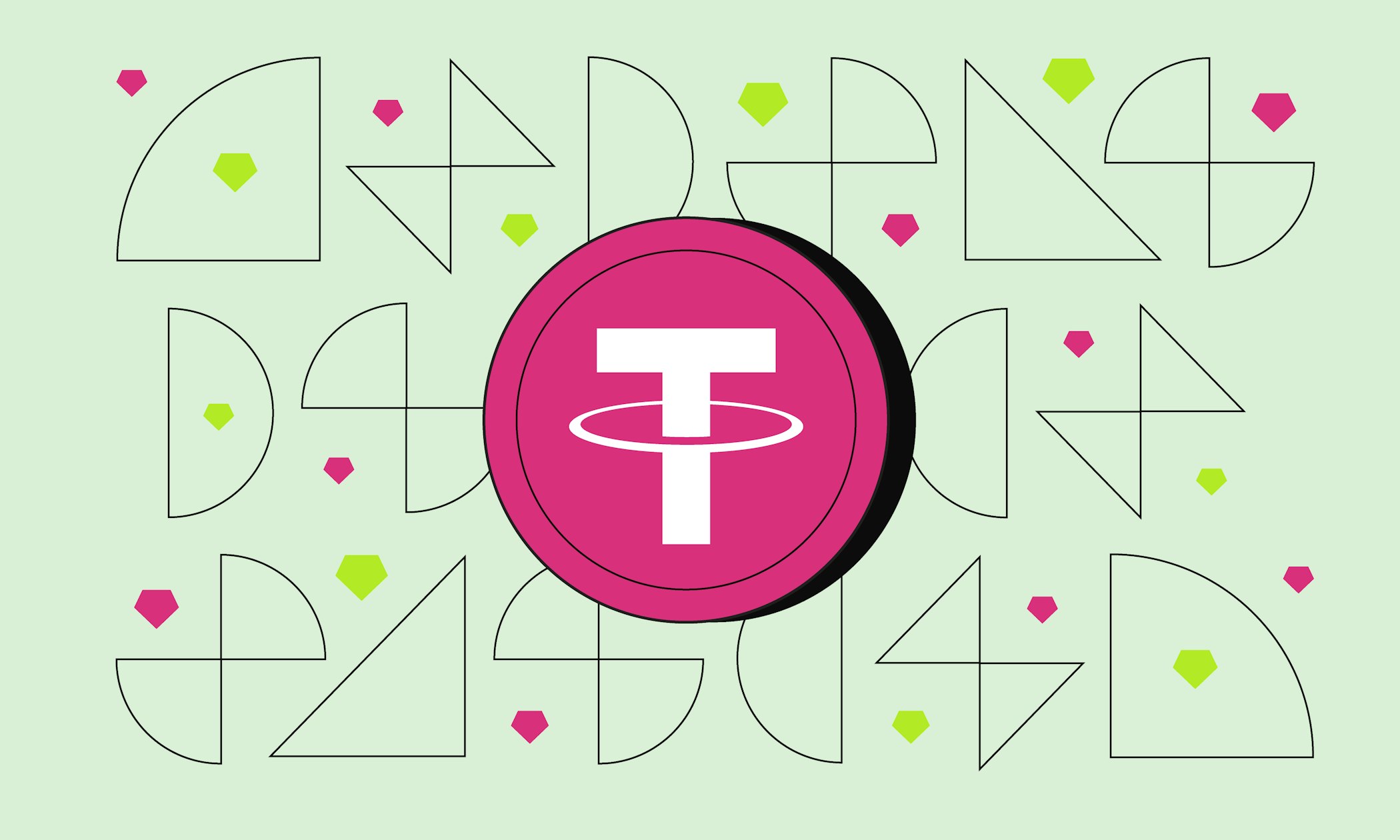
What is Tether (USDT)?
Tether’s (USDT) aim is to provide a less volatile digital currency by pegging its value to the US dollar at a 1:1 ratio. USDT is one of the most widely adopted stablecoins, which are blockchain-based currencies that are tied - or tethered - to fiat currencies.
Tether’s mission is to offer a safer digital asset that isn’t affected by market volatility in the same way that Bitcoin is.
USDT is tethered to the US dollar, the idea in theory being that you can trade 1 Tether for 1 US dollar, regardless of market conditions.
Tether faces competition from other stablecoins like USDC, which is also pegged to the US dollar.
Tether as a company currently offers four stablecoins tied to their respective fiat currencies, including USDT, EURT, CNHT, and MXNT.
The Tether price reached an all-time high of X€ on X.
What is Tether?
Launched in 2014, Tether (USDT) is one of the most popular stablecoins in terms of volume. Unlike other cryptocurrencies such as Bitcoin, whose price tends to fluctuate more unpredictably, Tether tries to hold its value around a specific asset. As a stablecoin, Tether is pegged or “tethered” to the US dollar, as the coin’s name suggests, in order to minimise price volatility.
Tether was created as a digital token that can be used across blockchains. As one of the pioneers of the stablecoin concept, Tether offers stablecoins tied to several different fiat currencies, including the US dollar (USDT), Euro (EURT), Mexican pesos (MXNT) and Chinese renminbi (CNHT), as well as gold (XAUT). This digital currency technology simplifies cross-border payments, as value isn’t necessarily lost in currency exchanges.
What is a Tether token?
Tether tokens are digital stablecoin assets that are pegged to real-world currencies on a 1:1 basis. This is meant to reduce the volatility and, according to Tether, make their tokens a safer, more stable form of currency for individual traders and businesses, like crypto exchanges, wallets, and payment processors, to move value across markets. Tether tokens can also be used as a transaction currency on some platforms.
Tether tokens can be used as a digital currency on many leading blockchains, including but not limited to Algorand, Avalanche, Bitcoin Cash’s Simple Ledger Protocol (SLP), Ethereum, EOS, Liquid Network, Omni, Polygon, Tezos, Tron, Solana and Statemine.
How does Tether work?
Tether tokens are pegged to a fiat currency at a 1-to-1 ratio, meaning that, in theory, 1 token equals 1 unit of that currency. A user can exchange fiat currency for Tether tokens by depositing the desired amount into Tether’s reserve and receiving the equivalent in Tether (USDT). The peg is maintained by keeping a sum of reserves equal in value to the USD as it is to USDT in circulation.
Controversy surrounding Tether’s reserve claims
Although Tether now claims that each of its tokens is 100% backed by their reserves, which include traditional currencies, cash equivalents and “may include other assets and receivables from loans made by Tether to third parties”, at one point there were several controversies around Tether’s lack of transparency on what exactly was included in those reserves and their business practices in general. Regulators scrutinised Tether’s claims that their tokens are fully backed by dollar reserves, and although Tether seems to be addressing these issues with its ‘Transparency’ page, where they maintain a daily record of current total assets and the detailed breakdown of their reserves, some doubts remain.
Ironically, these past controversies have impacted the price of USDT, at one point driving it down to as low as $0.88, a painfully glaring contradiction to Tether’s claims of keeping the price of their tokens stable and untied from external factors that tend to influence market volatility.
Tether price history
Although Tether claims that its tokens are uncoupled from the market volatility that usually burdens cryptocurrencies, the price of USDT has experienced significant ups and downs in its existence. Therefore, as with any other crypto, it is important to do your own research before investing and remember that there is no way to make a guaranteed USDT price prediction.
The price of Tether took a nosedive in mid-2017, reaching an all-time low of €0.80 in January 2018. After emerging from the controversies surrounding Tether’s business practices, the value of USDT slowly climbed again, reaching €0.9 in the spring of 2020, only to then crash again to around the €0.8 mark in 2021. Since this time, the price has recovered and is currently maintaining its goal of hovering around the equivalent of 1 USD.
How to use Tether?
Tether’s main use case is as a store of value that can be used as a payment method for services both on and off the blockchain. Tether has already partnered with a number of companies and services like Travala, which lets you purchase flights and hotel stays with cryptocurrencies, as well as a few other businesses that accept Tether as a valid currency. Although Tether is mainly used as a digital currency for conducting transactions online, it can also be bought as an investment if you choose to store money in crypto.
This article does not constitute investment advice, nor is it an offer or invitation to purchase any digital assets.
This article is for general purposes of information only and no representation or warranty, either expressed or implied, is made as to, and no reliance should be placed on, the fairness, accuracy, completeness or correctness of this article or opinions contained herein.
Some statements contained in this article may be of future expectations that are based on our current views and assumptions and involve uncertainties that could cause actual results, performance or events which differ from those statements.
None of the Bitpanda GmbH nor any of its affiliates, advisors or representatives shall have any liability whatsoever arising in connection with this article.
Please note that an investment in digital assets carries risks in addition to the opportunities described above.